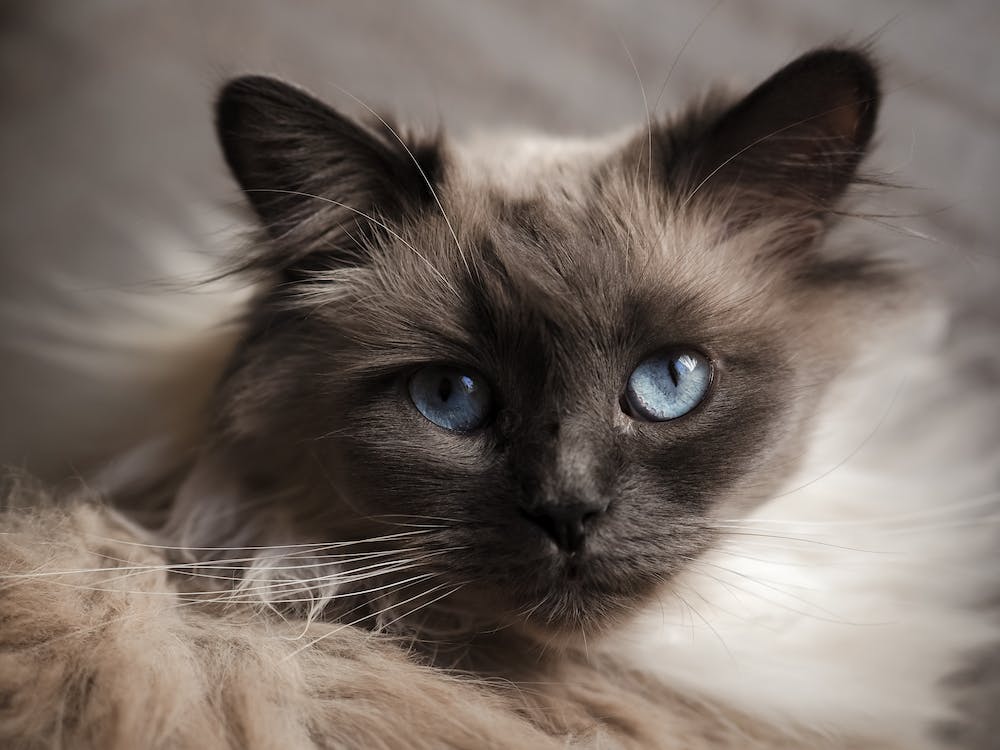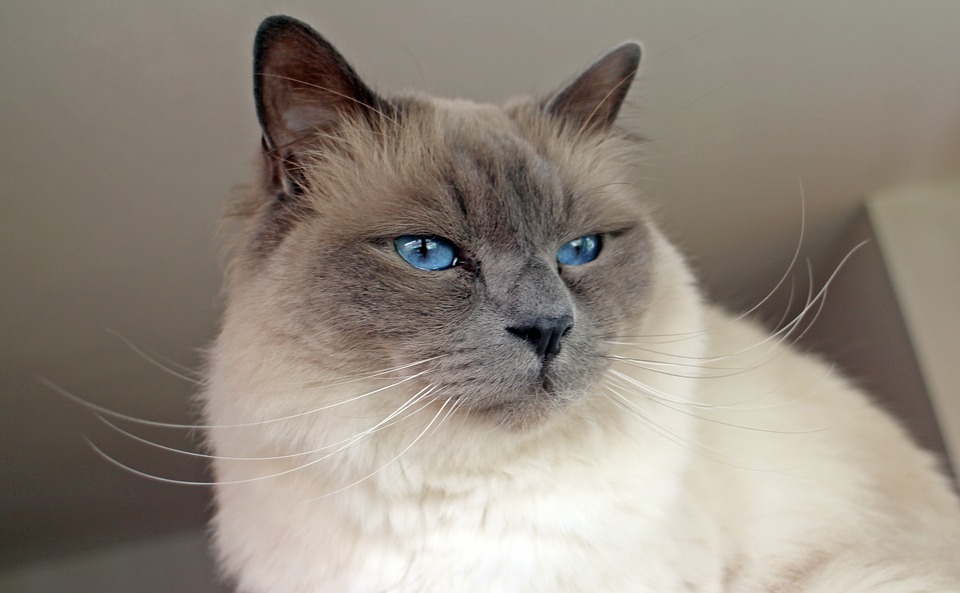The Birman is a long-haired, color-pointed, domestic cat breed that is distinguished by a silky coat, deep blue eyes, and contrasting white gloves or socks on each of its paws. It is also known as the “Sacred Cat of Burma” because based on legends, it descended from Burmese temple cats who were raised by Kittah priests. Its name is derived from Birmanie, which is the French form of Burma. If you’re interested to know more about the Birman cat breed, read on and find out more about its history and characteristics.
History
There are no clear records about the origin of the Birman cat breed but they are most often claimed to have originated in northern Burma in the Mount of Lugh as the companions of temple priests. A lot of stories exist of how these cats first arrived in France.
The development of Birman cats may have taken place in southeast Asia between different cats who carried the genes for a pointed pattern, long hair, and blue eyes. It’s also possible that the breed was created in France from cats imported in 1919 by Auguste Pavie and Major Gordon Russell who were both Europeans and were given a pair of temple cats as a reward for aiding the priests.
There was another pair of Birmans that was said to have been stolen by Thadde Haddisch and imported to France. However, the male did not make it alive but before it died, it was able to impregnate the female, and her kittens helped in establishing the breed in Europe.
During World War II, Birmans were almost wiped out as a breed. There were only two cats that stayed alive in Europe at the end of the war. It was a pair named Orloff and Xenia de Kaabaa which both belonged to Baudoin-Crevoisier. They were heavily outcrossed with longhair breeds like Siamese and Persian to rebuilt the Birman breed. Pure Birman litters began to be produced again by the early 1950s.
The first ever Birman cats were seal point and in 1959, the blue point color was introduced by using blue Persian lines. Later on, new colors were added by English breeders. Birman cats have also been used to develop new breeds like the Ragdoll cat breed.
It was also in 1959 when the first Birman cats were imported to the United States. In 1967, it was recognized by the Cat Fanciers Association. Aside from these, the breed was also recognized by the American Cat Fanciers Association, the Cat Fanciers Federation, the Canadian Cat Association, and the International Cat Association.
Characteristics of a Birman Cat
Average weight: 6 – 12 pounds
Life span: 12 – 16 years
Hypoallergenic: No
The Birman is a medium-sized cat that has a rectangular body, a broad face, and a distinct Roman nose. It has ideally wide ears on the base as they are tall and are set as much on top of the head as on the side. It has rounded eyes which are in deep sapphire blue. It has a medium-long coat that has a silky texture and little undercoat, making it less prone to matting. It also has a heavy ruff around its neck and is wavy on the belly.
The coat color of the Birman cat is always pointed. It has a pale body that varies in shade depending on its color and is set off by darker points. For example, a seal point Birman has a body that is from pale fawn to cream with a warm tone that is gradually shading to a lighter color on its belly and chest. They usually have deep seal brown points. The front and back paws are white gloves that end in even lines across the paws. Aside from the seal point, Birman cats also come in other point colors such as blue, chocolate, lilac, and lynx.
Birman cats are docile, quiet, and definitely love people and will follow them from one room to another. These cats will always want to be involved in everything you do. They are also smart cats and are always curious. They love exploring their environment that’s why it’s also important to always keep tabs on where they are. They also have soft voices that will remind you if it’s time to eat or if they want some nice cuddle time on the sofa. Birman cats love to be held and they will enjoy relaxing in your arms like a baby.
The Birman cat is a great choice for families with children because it loves the attention it receives from children. It is also possible to be happy to live with cat-friendly dogs because of its amiable disposition.
Caring for a Birman Cat
The coat of a Birman cat is kind of long but it has a silky texture that does not mat easily. Therefore, maintaining its coat is very easy. You just have to comb it weekly to remove dead hear and distribute skin oils. During their shedding season in the spring, you may want to comb them more frequently to help remove loose hair. A warm bath can also help in loosening and removing the shedding coat. It’s better to wet them with a hand-held shower nozzle instead of immersing them in a tub of water.
Just like other cats, Birman cats need the basic grooming services such as brushing their teeth, trimming their nails, and checking and cleaning their ears. Always keep their litter boxes clean to help keep their coats fresh and clean as well, and to prevent them from using other parts of your house as their bathroom. Keep your Birman as an indoor-only cat to prevent it from catching diseases from other cats and as well as from being attacked by dogs and other animals outside.
For Birman kittens that are three months old, you can feed them three small meals a day. By the time they reach six months of age, you can reduce it to two meals per day but increasing the amount of food at the same time. It’s better to consult your local vet about the best foods and diet you can give to your Birman cat.
If you’re looking for a loving companion at home, the Birman cat will definitely bring pleasure to your home and family. They are willing to participate in whatever you do, and with them, you will never be alone.


